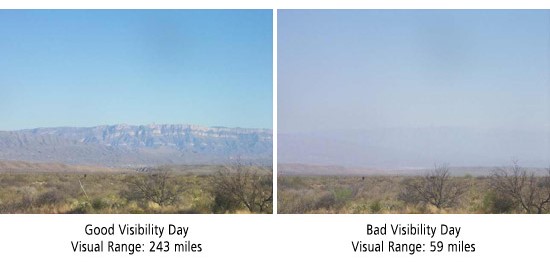Earlier this month, the Sierra Club stepped in to fight big polluters who are attempting to halt the Environmental Protection Agency’s plan to clean up the haze pollution that’s threatening wilderness areas and public health in Texas and neighboring states. We filed a brief in a lawsuit brought by the State of Texas and the owners of eight of the nation’s dirtiest coal plants -- including NRG, Luminant, GDF Suez, and Xcel/Southwestern Public Service Company -- who are attempting to keep operating their filthy plants without modern pollution controls.
Our legal briefs in the case have highlighted a number of residents who live near the plants and are concerned about their health, and outdoor enthusiasts who are dismayed to see increasingly hazy skies from their favorite hiking trails. Labor unions like SEIU, leaders in the environmental justice movement, and utility experts also joined our response because they support cleaning up Texas pollution.
Shamarra Norris is a nurse in the Dallas-Forth Worth area. “There are a number of kids in this area with asthma - and the air pollution from the coal plants across the state contribute to Dallas’ frequent bad air quality days,” she explained. “This makes the air dirty and dangerous to breathe. On those days, children with asthma are stuck inside and their parents are concerned with their health.”
The Environmental Protection Agency’s regional haze plan for Texas, released in January, is a common sense series of safeguards targeting sulfur dioxide, a pollutant that leads to haze and harmful fine particulate pollution downwind. The plan will address the serious air pollution reducing visibility at the state’s Big Bend and Guadalupe National Parks, the Wichita Mountains National Wildlife Refuge in Oklahoma, and other parks in the region.
Did you know that more sulfur dioxide haze pollution come from the eight Texas’ coal plants subject to the EPA’s haze clean-up plan than from all of the sources in Oklahoma, Arkansas, and Louisiana combined? It’s a serious air quality and public health problem.
The EPA’s haze plan for Texas was necessary to end the state’s nearly decade-long failure to comply with the Clean Air Act. It will reduce the state’s sulfur dioxide pollution from power plants by approximately 60 percent, saving more than 300 lives every year.
Texan Karen Seal knows the realities of life with asthma. On a recent family vacation to Big Bend National Park, one particular day was extremely hazy.
“That evening we had planned to camp in a primitive site,” said Seal. “We drove to a crowded area with many parked cars and trucks. As we gathered our gear, the winds started blowing and I could not breathe. My husband, a pharmacist, tried to help and gave me antihistamines. I struggled to breathe and there was no place to go for help.”
Seal worries that others who vacation in the park have similar serious health issues and may not be able to get help. “Asthma is deadly.” She supports a strong regional haze plan to clean up the air and help decrease asthma attacks.
Norris agrees. “Strong haze protections will make our state's worst polluters clean up so all Texans can have a healthy environment.”
